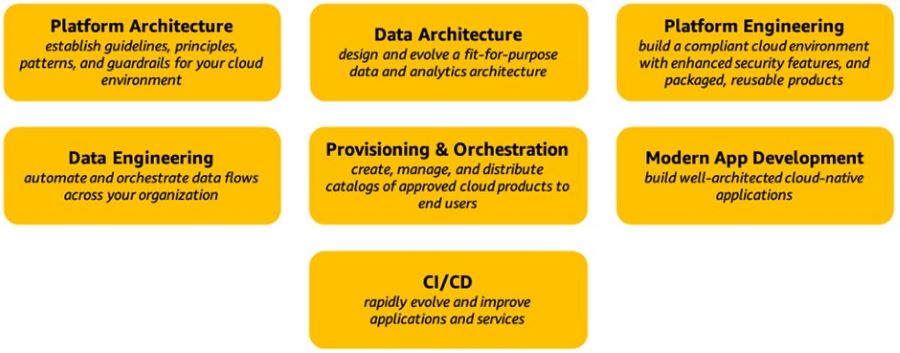The Platform Perspective encompasses seven essential capabilities that are vital for success as shown in the figure below. Figure 1: AWS CAF Platform perspective capabilities Platform Architecture
Data Architecture
Platform Engineering
Data Engineering
Provisioning and Orchestration
Modern Application Development
Continuous Integration and Continuous Delivery (CI/CD)
SummaryThe Platform Perspective is a crucial framework for accelerating the delivery of cloud workloads and achieving success in your cloud initiatives. By establishing guidelines, principles, and guardrails for your cloud environment, you can create a well-architected foundation that accelerates implementation, reduces risk, and drives cloud adoption. With the Platform Perspective as your guide, you can navigate the complexities of infrastructure and applications, harnessing the power of an enterprise-grade, scalable, and hybrid cloud environment. By embracing these capabilities, you will be well-equipped to meet the demands of today's dynamic business landscape and drive successful outcomes in your cloud initiatives. In Part 6, we will explore the crucial elements and best practices for securing your cloud workloads, protecting your data, and mitigating risks. From identity and access management to network security, data protection, and compliance, the Security Perspective plays a pivotal role in ensuring the confidentiality, integrity, and availability of your cloud environment.
0 Comments
Leave a Reply. |
AuthorTim Hardwick is a Strategy & Transformation Consultant specialising in Technology Strategy & Enterprise Architecture Archives
June 2023
Categories
All
|
Site powered by Weebly. Managed by iPage



